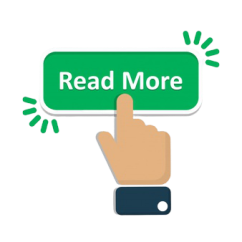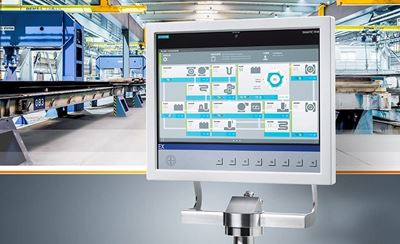HMI (human machine interface) is an interactive screen that provides information, data and situational metrics of a given system to a human user operating the HMI screen. HMI often known by the acronym HMI, refers to a dashboard or screen used to control machinery. Line operators, managers and supervisors in industry rely on HMI to translate complex data into useful information. Therefor HMI is a connection device between operator and machine. HMI is combine of hardware and software and consist of some devices such as button, display, pointer, indicator, curve and alarms.
HMI make automation as a necessary part of industry.
There is some advantage of using HMI in industry. HMI is easy to use and understandable. Visual display provides a trusty data about levels, pressure and movement, beside it happens in real time without hesitation. With use of HMI every operator could control the process and act on time. Beside it provides good data both on time and historical. HMI make the data as a reliable information so that you could make effective decision.

Advantages of using HMI
-easy to understand
- visual display
- real time info
- control process
- benefit historical and trending data
- less errors
- reliable information
-uniformity in controls
- alarm or warning
- easy to manage industrial plant
- cost reduction
- easy communication between all part

Read more : 6 key features for choosing the right HMI
Types of HMI
HMI is considered an interface that allows humans to interact the machine. Examples of HMI physical aspects could be a machine with touch display, a push button, a mobile device or a computer with a keypad.
Data handler: it is suitable for systems with feedback. All data gathering and print reports beside it has alarm, trending, recipes and visual graphs.
Pushbutton replacer: this HMI putting every function of every button in one location.
Overseer: this HMI is useful for involves with MES or Scada.
HMI specification
- Toch screen (LCD or TFT) in various sizes
- Ports (RS-485 and RS-232)
- Simulator on line/off line
- USB port for send and receiving
- Record information
- Could show animation
- Could show info in diagram and curves
- Connect to all kind of PLCs
- RTC act in specified time and date
- Connect to inverter, server and portable devices
HMI in industrial automation
HMI could control and show all process and this available in I/O technology. For example, in Ethercat. HMI is necessary part in Pharmaceuticals, Manufacturing plant, food and beverage industry, vending machines and utilities.
HMI brands
There is large amount of manufacture companies which produce high-tech HMIs. Such as : Simens, Allen Bradely, Mitsubishi, Omron, Toshiba, Delta, Vigor, LS,Beckhoff, Fatek, Fuji, Fanuc ….etc.
HMI new generations
Modern generations provide connection to all process parts in factory and could change in specification applications. In advance automations HMIs support simple 11 inch to 15.6 inch devices.
How to select Right HMI?
First choosing the right HMI is ensuring the environment rating are suitable for the devices and will physically fit into space
HMI display size is another factor, memory capacity, ports and touchable are another factors for choosing HMI. There are some factors for choosing the right and effective HMI which mentioned below:
Screen size: For scanda software screens need to be fit an HMI. A larger HMI will leave you fewer screens.
Touch type: there is two different touch such as standard touch screen or Elo interface.
All in one product: many HMIs include the screen, memory, storage and some devices. You could keep HMI and PLC together or separate.
Resolution: for operating it is necessary to have a right screen resolution.






